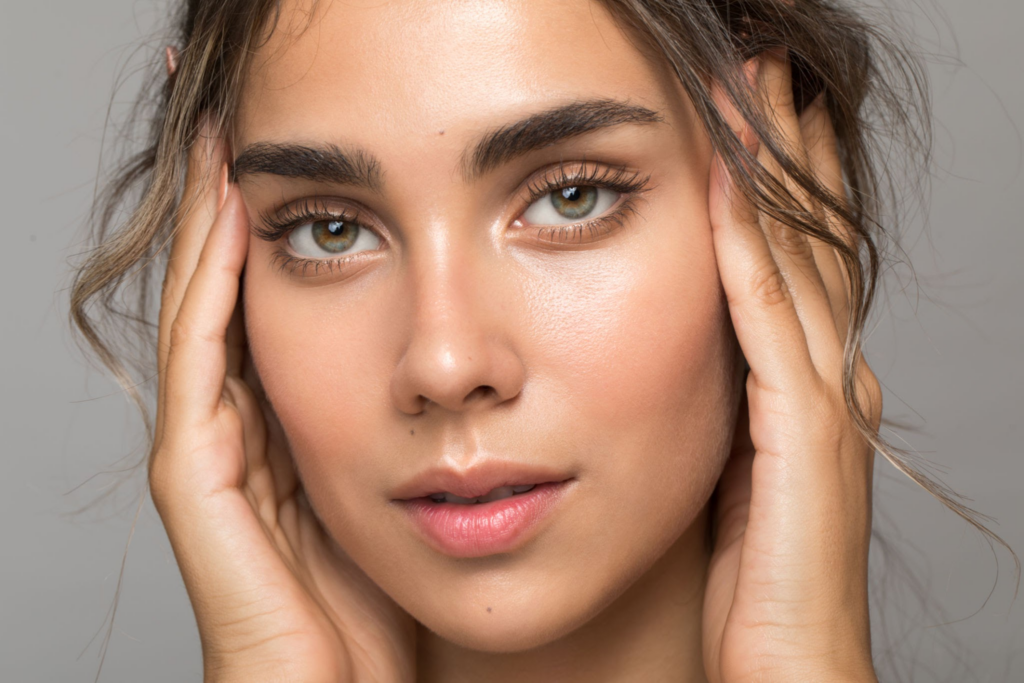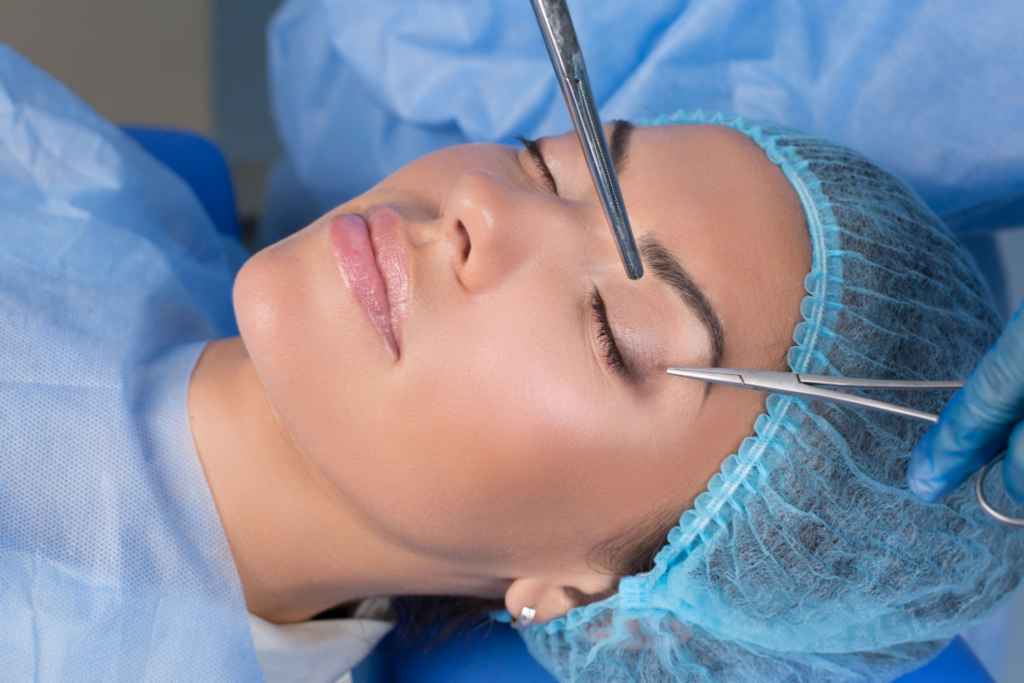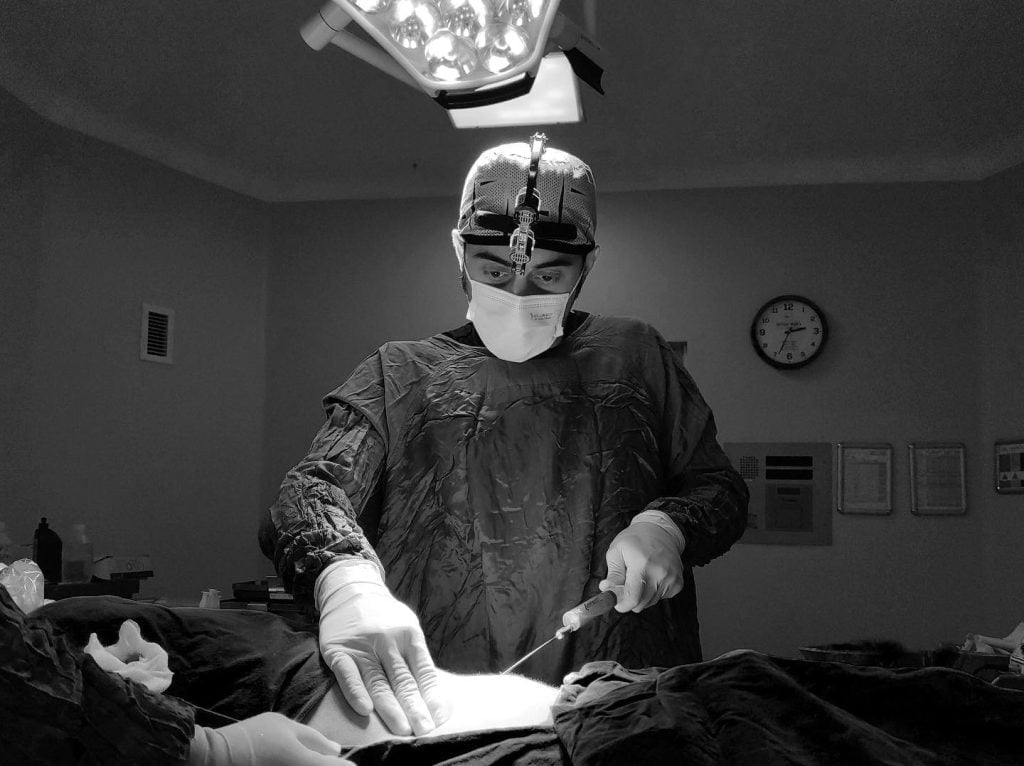In the pursuit of facial perfection, individuals often turn to cosmetic procedures to enhance their features and boost confidence. Canthoplasty, a surgical technique focused on the outer corners of the eyes, has emerged as a powerful tool in the realm of facial aesthetics. From its humble beginnings to its integration into modern facial feminization surgery (FFS), canthoplasty has evolved significantly, offering patients transformative results. In this comprehensive guide, we delve deep into the intricacies of canthoplasty, exploring its various applications, patient considerations, and comparing standalone procedures with its role in FFS.
Table of Contents
A. Definition and Purpose
Canthoplasty, derived from the Greek word “kanthos” meaning corner of the eye, involves the surgical alteration of the lateral canthus, or outer corner of the eye. The primary purpose of canthoplasty is to enhance the appearance of the eyes by addressing issues such as eyelid laxity, asymmetry, or downward slanting. By adjusting the position and shape of the outer corners, canthoplasty aims to create a more youthful, alert, and aesthetically pleasing eye contour.
B. Evolution of Canthoplasty Techniques
Over the years, canthoplasty techniques have evolved significantly, driven by advancements in surgical technology and a deeper understanding of facial anatomy. Traditional approaches, such as lateral canthotomy and cantholysis, have given way to more refined methods, including lateral canthopexy and canthoplasty with midface lift. These modern techniques offer improved precision, customization, and long-term outcomes, catering to the diverse needs of patients seeking facial rejuvenation.
C. Importance in Facial Aesthetics
The outer corners of the eyes play a crucial role in facial aesthetics, contributing to the overall harmony and balance of the face. Canthoplasty addresses not only cosmetic concerns but also functional issues such as eyelid malposition and ectropion. By restoring the natural contour and alignment of the lateral canthus, canthoplasty enhances facial symmetry, youthfulness, and attractiveness, making it a valuable tool in the arsenal of plastic surgeons specializing in facial rejuvenation.

II. Canthoplasty as a Standalone Procedure
A. Patient Selection Criteria
1. Candidates for Isolated Canthoplasty
Candidates for standalone canthoplasty typically present with specific concerns related to the appearance or function of the outer eye corners. Common indications include eyelid ptosis, lateral canthal dystopia, or lower eyelid retraction. Ideal candidates are in good overall health, with realistic expectations and a thorough understanding of the procedure and its potential outcomes.
2. Medical Considerations
Before undergoing canthoplasty, patients undergo a comprehensive medical evaluation to assess their suitability for surgery. Factors such as pre-existing medical conditions, medication use, and previous surgeries are taken into account to minimize the risk of complications and ensure optimal outcomes.
B. Procedure Overview
1. Surgical Techniques
Canthoplasty techniques vary depending on the specific goals of the procedure and the patient’s anatomy. Common approaches include lateral canthopexy, canthoplasty with lateral retinacular release, and canthoplasty with midface lift. During the procedure, incisions are carefully placed to access the lateral canthus, allowing the surgeon to manipulate the tissues and achieve the desired aesthetic outcome.

2. Recovery and Aftercare
Following canthoplasty, patients are provided with detailed postoperative instructions to facilitate healing and minimize discomfort. Swelling, bruising, and mild discomfort are common in the initial days after surgery, but these symptoms gradually subside over time. Patients are advised to avoid strenuous activities, protect their eyes from sunlight and trauma, and attend follow-up appointments for monitoring and wound care.
C. Expected Results and Limitations
1. Cosmetic Improvements
Canthoplasty can produce dramatic improvements in the appearance of the eyes, enhancing symmetry, and creating a more youthful, vibrant look. By addressing issues such as eyelid laxity, asymmetry, or downward slanting, canthoplasty restores harmony to the facial features, boosting confidence and self-esteem.
2. Potential Risks and Complications
Like any surgical procedure, canthoplasty carries inherent risks, including infection, bleeding, and adverse reactions to anesthesia. Additionally, complications such as undercorrection, overcorrection, or asymmetry may occur, requiring further intervention to achieve optimal results. However, with proper patient selection, meticulous surgical technique, and attentive postoperative care, the risk of complications can be minimized, ensuring a safe and successful outcome.

III. Canthoplasty in the Context of Facial Feminization Surgery (FFS)
A. Understanding FFS
Facial feminization surgery (FFS) is a comprehensive approach to gender-affirming care, designed to modify facial features to align with a patient’s gender identity. The goals of FFS include softening masculine facial features, enhancing feminine characteristics, and improving overall facial harmony. Common procedures involved in FFS include forehead contouring, rhinoplasty, jaw reduction, and lip augmentation, among others.
B. Role of Canthoplasty in FFS
1. Integration with Other Procedures
Canthoplasty plays a crucial role in FFS by addressing specific gender-related concerns related to the appearance of the eyes. For transgender women seeking a more feminine facial appearance, canthoplasty can help to feminize the eyes, creating a softer, more delicate contour that aligns with their gender identity.
2. Enhanced Feminization Effects
By combining canthoplasty with other FFS procedures, surgeons can achieve more comprehensive feminization results, addressing multiple aspects of facial appearance simultaneously. Canthoplasty enhances the overall femininity of the face, complementing other procedures such as forehead contouring and rhinoplasty to create a harmonious and natural-looking result.
C. Patient Considerations and Decision Making
1. Consultation Process
During the initial consultation for FFS, patients undergo a thorough evaluation to assess their goals, expectations, and medical history. Surgeons work closely with patients to develop customized treatment plans tailored to their unique needs and preferences. This collaborative approach ensures that patients are actively involved in the decision-making process, empowering them to make informed choices about their care.
2. Customization of Treatment Plans
Each patient presents with a unique set of concerns and aesthetic goals, necessitating a personalized approach to treatment. Surgeons carefully evaluate the facial anatomy and discuss available options with patients to determine the most appropriate course of action. By tailoring treatment plans to individual needs, surgeons can achieve optimal outcomes while respecting the patient’s identity and preferences.

IV. Comparing Standalone Canthoplasty vs. Canthoplasty in FFS
A. Cosmetic Outcomes and Expectations
1. Facial Harmony and Symmetry
Both standalone canthoplasty and canthoplasty within the context of FFS aim to improve facial harmony and symmetry. However, the specific goals and expectations may vary depending on the patient’s unique circumstances. Standalone canthoplasty focuses primarily on addressing aesthetic concerns related to the eyes, while canthoplasty in FFS aims to achieve broader feminization effects across the entire face.
2. Impact on Gender Affirmation
Canthoplasty plays a significant role in gender affirmation for transgender women undergoing FFS, helping to align their facial features with their gender identity. By creating a more feminine eye contour, canthoplasty enhances the overall femininity of the face, contributing to a more authentic and affirming appearance.
B. Recovery and Downtime
1. Duration and Intensity of Recovery Period
The recovery period following canthoplasty can vary depending on the extent of the procedure and individual healing characteristics. In standalone canthoplasty, patients typically experience mild to moderate swelling and bruising, with most symptoms resolving within a few weeks. In contrast, canthoplasty as part of FFS may involve a more extensive surgical approach, requiring a longer recovery period and more intensive postoperative care.
2. Postoperative Care Requirements
Regardless of the context, postoperative care is essential for ensuring optimal healing and outcomes following canthoplasty. Patients are advised to follow their surgeon’s instructions carefully, including proper wound care, medication management, and activity restrictions. Regular follow-up appointments allow surgeons to monitor progress, address any concerns, and provide additional support as needed.
C. Financial Considerations
1. Cost Analysis
The cost of canthoplasty can vary depending on factors such as the surgeon’s expertise, the complexity of the procedure, and the geographic location. Standalone canthoplasty may be more affordable compared to canthoplasty as part of FFS, as the latter often involves multiple procedures and a more extensive surgical approach. Patients should discuss pricing and financing options with their surgeon to ensure transparency and affordability.
2. Insurance Coverage and Assistance Programs
In some cases, canthoplasty may be covered by health insurance if it is deemed medically necessary to address functional issues such as eyelid malposition or trauma. However, cosmetic procedures, including canthoplasty for aesthetic purposes, are typically not covered by insurance. Patients may explore alternative financing options, such as medical loans or assistance programs, to help offset the cost of surgery and make treatment more accessible.

Why You Should Work with Dr. MFO for Plastic Surgery in Turkey
Are you considering plastic surgery to enhance your facial features and achieve your desired aesthetic goals? Look no further than Dr. Mehmet Fatih Okyay, renowned for his superior success in Facial Feminization Surgery (FFS) and Facial Masculinization Surgery (FMS). With a distinguished career spanning over a decade, Dr. MFO combines exceptional surgical skills with a deep understanding of facial aesthetics to deliver transformative results that exceed expectations.
Exceptional Expertise in Facial Feminization Surgery
Dr. Mehmet Fatih Okyay, MD, FEBOPRAS, brings a wealth of experience and expertise to the field of plastic, reconstructive, and aesthetic surgery. Ranked 8th in his term in the Turkish Medical Specialization Examination, Dr. MFO pursued his residency at the esteemed Istanbul University, Cerrahpaşa Faculty of Medicine, honing his craft under the guidance of world-renowned experts.
Accolades and Recognition
Dr. MFO’s commitment to excellence has been recognized on both national and international platforms. In 2018, he was awarded the prestigious Fellow of the European Board of Plastic, Reconstructive and Aesthetic Surgeons (FEBOPRAS) award by the European Association of Medical Specialists in Brussels. This accolade, synonymous with quality equivalence, highlights Dr. MFO’s dedication to delivering superior surgical outcomes.
Founder of Dr. MFO Clinic
Driven by a passion for perfection and a vision to provide personalized care, Dr. Mehmet Fatih Okyay established Dr. MFO Clinic on June 1st, 2021. As the owner of the clinic, Dr. MFO ensures that each patient receives individualized attention, comprehensive preoperative assessments, and meticulous postoperative care.
Areas of Specialization
With a focus on facial aesthetics, Dr. MFO specializes in a wide range of procedures, including facelifts, nose aesthetics, and Facial Feminization Surgeries (FFS). His expertise extends to body aesthetic surgeries, such as tummy tucks, liposuction, and breast aesthetics, offering patients comprehensive solutions to enhance their overall appearance.
Active Participation in Scientific Meetings
Throughout his career, Dr. Mehmet Fatih Okyay has actively contributed to the advancement of plastic surgery through his participation in scientific meetings and organizing committees. As a respected speaker, he shares his knowledge and insights with colleagues and peers, fostering collaboration and innovation in the field.
Professional Memberships
As a testament to his commitment to excellence, Dr. MFO is a permanent member of prestigious organizations such as the International Society of Aesthetic Surgeons (ISAPS), the Turkish Plastic Surgery Association (TSPRAS), and the Turkish Aesthetic Plastic Surgery Association (TSAPS). These affiliations underscore his dedication to staying at the forefront of advancements in plastic surgery.
Multilingual Abilities and Personal Interests
In addition to his proficiency in academic degree English and fluent level Spanish, Dr. MFO possesses intermediate-level French language skills, facilitating seamless communication with a diverse range of patients. Beyond his professional endeavors, Dr. Mehmet Fatih Okyay is a talented songwriter, poet, and musician, showcasing his creativity and passion for the arts.
Awards and Recognition
Dr. MFO’s contributions to the field of plastic surgery have been acknowledged with prestigious awards, including the Fellow of the European Board of Plastic, Reconstructive & Aesthetic Surgery, and the Fellow of the Turkish Board of Plastic, Reconstructive & Aesthetic Surgery, both conferred in April 2018.
If you’re seeking unparalleled expertise, personalized care, and exceptional results in plastic surgery, Dr. Mehmet Fatih Okyay offers a unique combination of skill, experience, and dedication. Whether you’re considering Facial Feminization Surgery (FFS), Facial Masculinization Surgery (FMS), or other aesthetic procedures, Dr. MFO’s commitment to excellence ensures that you’re in capable hands every step of the way. Schedule a consultation with Dr. MFO today and embark on your journey towards a more confident and rejuvenated you.

V. Conclusion
A. Recap of Key Points
Canthoplasty emerges as a versatile surgical technique with applications in both standalone cosmetic procedures and comprehensive facial feminization surgery. By addressing periorbital concerns and enhancing facial harmony, canthoplasty contributes to transformative aesthetic outcomes and supports patients’ gender affirmation journeys. Comprehensive preoperative evaluations, collaborative decision-making, and meticulous surgical techniques are essential for achieving optimal results and patient satisfaction.
B. Considerations for Patients
Patients considering canthoplasty, whether as a standalone procedure or as part of FFS, should prioritize consultations with board-certified plastic surgeons specializing in facial aesthetics and gender-affirming surgeries. Clear communication, realistic expectations, and thorough preoperative assessments are fundamental to a successful treatment experience. Additionally, exploring financial considerations, insurance coverage options, and postoperative care requirements can facilitate informed decision-making and enhance overall treatment outcomes.
C. Future Trends and Directions in Canthoplasty
As advancements in surgical technology and techniques continue to evolve, the landscape of canthoplasty is poised for further innovation. Future trends may include minimally invasive approaches, personalized treatment protocols, and enhanced aesthetic outcomes through interdisciplinary collaborations. By staying abreast of emerging trends and embracing evidence-based practices, plastic surgeons can continue to elevate the standards of care in canthoplasty and meet the evolving needs of patients worldwide.
Visit Dr.MFO Instagram profile to see real patient transformations! Get a glimpse of the incredible results achieved through facial feminization surgery and other procedures. The profile showcases before-and-after photos that highlight Dr. MFO’s expertise and artistic vision in creating natural-looking, beautiful outcomes.
Ready to take the next step in your journey? Schedule a free consultation with Dr. MFO today. During the consultation, you can discuss your goals, ask any questions you may have, and learn more about how Dr. MFO can help you achieve your desired look. Don’t hesitate to take advantage of this free opportunity to explore your options and see if Dr. MFO is the right fit for you.
VI. FAQs (Frequently Asked Questions)
Can I undergo canthoplasty without other facial procedures?
Yes, canthoplasty can be performed as a standalone procedure to address specific concerns related to the lower eyelids and outer eye corners.
How long does it take to recover from canthoplasty?
Recovery times vary, but patients typically experience swelling and bruising for the first week, with gradual improvement over several weeks.
Will my insurance cover canthoplasty as part of FFS?
Insurance coverage for canthoplasty in the context of FFS may be available, depending on individual insurance policies and coverage criteria for gender-affirming surgeries.
What is the difference between blepharoplasty and Canthoplasty?
While both procedures focus on enhancing the aesthetics of the eyelids, blepharoplasty primarily addresses excess skin and fat deposits, whereas canthoplasty targets the position and shape of the outer eye corners.
Can I undergo canthoplasty without other facial procedures?
Yes, canthoplasty can be performed as a standalone procedure to address specific concerns related to the lower eyelids and outer eye corners.
How long does it take to recover from canthoplasty?
Recovery times vary, but patients typically experience swelling and bruising for the first week, with gradual improvement over several weeks.
Will my insurance cover canthoplasty as part of FFS?
Insurance coverage for canthoplasty in the context of FFS may be available, depending on individual insurance policies and coverage criteria for gender-affirming surgeries.
What is the difference between blepharoplasty and Canthoplasty?
While both procedures focus on enhancing the aesthetics of the eyelids, blepharoplasty primarily addresses excess skin and fat deposits, whereas canthoplasty targets the position and shape of the outer eye corners.
Does Canthoplasty leave scars?
Canthoplasty incisions are strategically placed to minimize scarring, and surgeons employ meticulous techniques to ensure optimal wound healing. While some patients may experience minimal scarring, the overall goal is to achieve natural-looking results with minimal visibility of scars.
How long does a Canthoplasty last?
The longevity of canthoplasty results varies depending on individual factors such as skin elasticity, aging, and lifestyle habits. While canthoplasty offers long-lasting improvements to the eye contour, ongoing facial aging may necessitate additional maintenance procedures in the future.
Is a Canthoplasty permanent?
Canthoplasty results are considered long-lasting, but they are not necessarily permanent. While the structural changes achieved through canthoplasty endure, natural aging processes and lifestyle factors may impact the longevity of results over time.
How risky is Canthoplasty?
Canthoplasty is generally considered a safe and effective procedure when performed by experienced, board-certified plastic surgeons. Like any surgical intervention, it carries inherent risks, including bleeding, infection, and adverse reactions to anesthesia. However, these risks are minimized through thorough preoperative assessments and meticulous surgical techniques.
What are the risks of Canthoplasty?
Common risks associated with canthoplasty include temporary swelling, bruising, and discomfort during the recovery period. In rare cases, complications such as infection, scarring, or asymmetry may occur. Patients should discuss potential risks and complications with their surgeon during the consultation process.
Can Canthoplasty change eye shape?
Canthoplasty can modify the shape and contour of the eyes by repositioning the outer eye corners and enhancing symmetry. By creating a more open, almond-shaped appearance, canthoplasty contributes to subtle yet impactful changes in eye aesthetics.
Does Canthoplasty make eyes bigger?
While canthoplasty does not directly increase the size of the eyes, it can create the illusion of larger, more youthful eyes by lifting and repositioning the outer eye corners. This enhancement contributes to a more alert and refreshed appearance.
Which is better Canthopexy or Canthoplasty?
Canthoplasty and canthopexy are both effective techniques for addressing lower eyelid laxity and improving eye aesthetics. Canthoplasty involves more extensive modifications to the outer eye corners, whereas canthopexy focuses on tightening the lower eyelid without altering its position significantly.
Can Canthoplasty cause blindness?
While extremely rare, serious complications such as vision loss or blindness can occur following canthoplasty. These complications are typically associated with damage to the optic nerve or blood vessels during surgery. To minimize the risk of such complications, patients should choose a qualified surgeon and undergo thorough preoperative evaluations.
Is Canthoplasty a plastic surgery?
Yes, canthoplasty is a type of plastic surgery that focuses on enhancing the aesthetics of the eye region by modifying the position and shape of the outer eye corners. It is commonly performed by board-certified plastic surgeons with specialized training in facial aesthetics.
What to expect after a Canthoplasty?
After canthoplasty, patients can expect some degree of swelling, bruising, and discomfort in the treated area. These symptoms typically resolve within a few weeks, and patients can gradually resume normal activities. Follow-up appointments with the surgeon are essential to monitor healing progress and address any concerns.
What is the difference between Canthoplasty and brow lift?
While both canthoplasty and brow lift procedures focus on enhancing the upper face, they target different anatomical structures and address distinct aesthetic concerns. Canthoplasty primarily involves modifying the outer eye corners, whereas brow lift elevates and repositions the eyebrows to address forehead wrinkles and sagging.
What is canthoplasty in Korean?
In Korean plastic surgery terminology, canthoplasty is often referred to as “눈 끝 수술” (pronounced as “nun kkeut susul”), which translates to “eye end surgery.” This procedure aims to create a more youthful and attractive eye contour by reshaping the outer eye corners.
Is lateral Canthoplasty safe?
Lateral canthoplasty, a specific technique for addressing lateral canthal laxity, is generally considered safe when performed by experienced surgeons. By carefully preserving the integrity of the eyelid structures and adhering to meticulous surgical protocols, the risk of complications is minimized, and optimal outcomes can be achieved.
Does Canthoplasty affect eyesight?
Canthoplasty typically does not affect eyesight directly, as it focuses on modifying the position and shape of the outer eye corners without directly impacting visual function. However, as with any surgical procedure near the eyes, there is a potential risk of complications that could affect eyesight, although such occurrences are rare.
How much does Canthoplasty cost in India?
The cost of canthoplasty in India varies depending on factors such as the surgeon’s expertise, the facility where the procedure is performed, and the specific techniques employed. Patients should consult with qualified plastic surgeons to obtain accurate cost estimates based on their individual needs and desired outcomes.
What is the difference between Canthotomy and Canthoplasty?
Canthotomy and canthoplasty are both surgical procedures involving the manipulation of the canthal structures, but they serve different purposes. Canthotomy involves releasing the lateral canthal tendon to provide immediate relief in cases of acute eyelid trauma, while canthoplasty involves modifying the canthal anatomy for cosmetic or functional reasons.
What does a Canthoplasty do?
Canthoplasty aims to enhance the aesthetics of the eye region by modifying the position, shape, or tension of the outer eye corners. This procedure addresses concerns such as lower eyelid laxity, asymmetry, and scleral show, resulting in improved facial harmony and symmetry.
How long does Canthoplasty last?
Canthoplasty results are typically long-lasting, providing enduring improvements to the eye contour and periorbital aesthetics. While individual factors such as aging and lifestyle habits may influence the longevity of results, many patients enjoy the benefits of canthoplasty for years following the procedure.
Does Canthoplasty leave scars?
Canthoplasty incisions are strategically placed to minimize scarring, and surgeons employ meticulous techniques to ensure optimal wound healing. While some patients may experience minimal scarring, the overall goal is to achieve natural-looking results with minimal visibility of scars.
Is a Canthoplasty permanent?
Canthoplasty results are considered long-lasting, but they are not necessarily permanent. While the structural changes achieved through canthoplasty endure, natural aging processes and lifestyle factors may impact the longevity of results over time.
How risky is Canthoplasty?
Canthoplasty is generally considered a safe and effective procedure when performed by experienced, board-certified plastic surgeons. Like any surgical intervention, it carries inherent risks, including bleeding, infection, and adverse reactions to anesthesia. However, these risks are minimized through thorough preoperative assessments and meticulous surgical techniques.
What are the risks of Canthoplasty?
Common risks associated with canthoplasty include temporary swelling, bruising, and discomfort during the recovery period. In rare cases, complications such as infection, scarring, or asymmetry may occur. Patients should discuss potential risks and complications with their surgeon during the consultation process.
Which is better Canthopexy or Canthoplasty?
Canthoplasty and canthopexy are both effective techniques for addressing lower eyelid laxity and improving eye aesthetics. Canthoplasty involves more extensive modifications to the outer eye corners, whereas canthopexy focuses on tightening the lower eyelid without altering its position significantly.
Can Canthoplasty change eye shape?
Canthoplasty can modify the shape and contour of the eyes by repositioning the outer eye corners and enhancing symmetry. By creating a more open, almond-shaped appearance, canthoplasty contributes to subtle yet impactful changes in eye aesthetics.
Is Canthoplasty a plastic surgery?
Yes, canthoplasty is a type of plastic surgery that focuses on enhancing the aesthetics of the eye region by modifying the position and shape of the outer eye corners. It is commonly performed by board-certified plastic surgeons with specialized training in facial aesthetics.
Does Canthoplasty leave scars?
Canthoplasty incisions are strategically placed to minimize scarring, and surgeons employ meticulous techniques to ensure optimal wound healing. While some patients may experience minimal scarring, the overall goal is to achieve natural-looking results with minimal visibility of scars.
Does Canthoplasty affect eyesight?
Canthoplasty typically does not affect eyesight directly, as it focuses on modifying the position and shape of the outer eye corners without directly impacting visual function. However, as with any surgical procedure near the eyes, there is a potential risk of complications that could affect eyesight, although such occurrences are rare.
What is the difference between blepharoplasty and Canthoplasty?
While both procedures focus on enhancing the aesthetics of the eyelids, blepharoplasty primarily addresses excess skin and fat deposits, whereas canthoplasty targets the position and shape of the outer eye corners.
What is the difference between Canthoplasty and brow lift?
While both canthoplasty and brow lift procedures focus on enhancing the upper face, they target different anatomical structures and address distinct aesthetic concerns. Canthoplasty primarily involves modifying the outer eye corners, whereas brow lift elevates and repositions the eyebrows to address forehead wrinkles and sagging.
Which is better Canthopexy or Canthoplasty?
Canthoplasty and canthopexy are both effective techniques for addressing lower eyelid laxity and improving eye aesthetics. Canthoplasty involves more extensive modifications to the outer eye corners, whereas canthopexy focuses on tightening the lower eyelid without altering its position significantly.
Is lateral Canthoplasty safe?
Lateral canthoplasty, a specific technique for addressing lateral canthal laxity, is generally considered safe when performed by experienced surgeons. By carefully preserving the integrity of the eyelid structures and adhering to meticulous surgical protocols, the risk of complications is minimized, and optimal outcomes can be achieved.
What are the steps in Canthoplasty?
Canthoplasty involves several key steps, including preoperative assessments, surgical planning, anesthesia administration, incision creation, canthal modification, wound closure, and postoperative care. Each step is carefully orchestrated to ensure patient safety and optimal aesthetic outcomes.
What to expect after a Canthoplasty?
After canthoplasty, patients can expect some degree of swelling, bruising, and discomfort in the treated area. These symptoms typically resolve within a few weeks, and patients can gradually resume normal activities. Follow-up appointments with the surgeon are essential to monitor healing progress and address any concerns.
How long does it take for Canthoplasty to relax?
The healing and relaxation process following canthoplasty varies among individuals and may take several weeks to months. During this time, patients may experience gradual softening of tissues and reduction in postoperative swelling, contributing to a more natural and relaxed appearance.
How much does Canthoplasty cost in India?
The cost of canthoplasty in India varies depending on factors such as the surgeon’s expertise, the facility where the procedure is performed, and the specific techniques employed. Patients should consult with qualified plastic surgeons to obtain accurate cost estimates based on their individual needs and desired outcomes.
What is the difference between Canthotomy and Canthoplasty?
Canthotomy and canthoplasty are both surgical procedures involving the manipulation of the canthal structures, but they serve different purposes. Canthotomy involves releasing the lateral canthal tendon to provide immediate relief in cases of acute eyelid trauma, while canthoplasty involves modifying the canthal anatomy for cosmetic or functional reasons.





